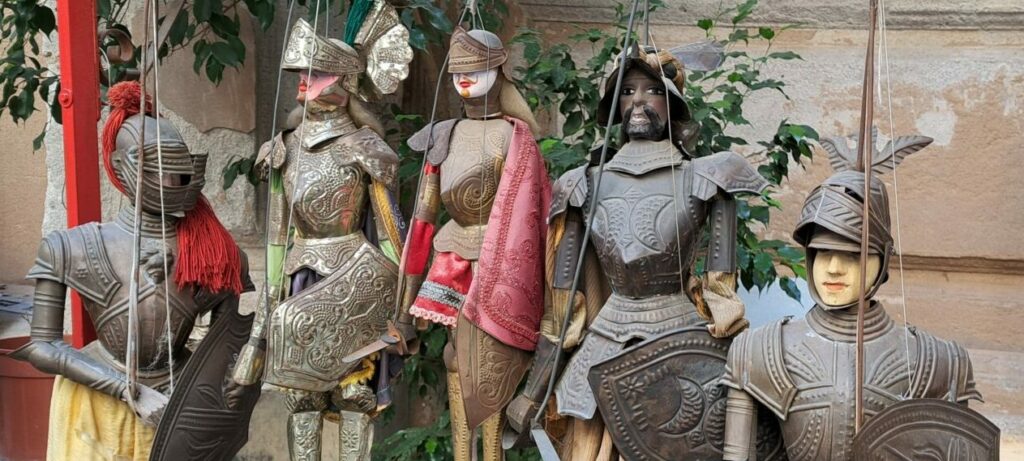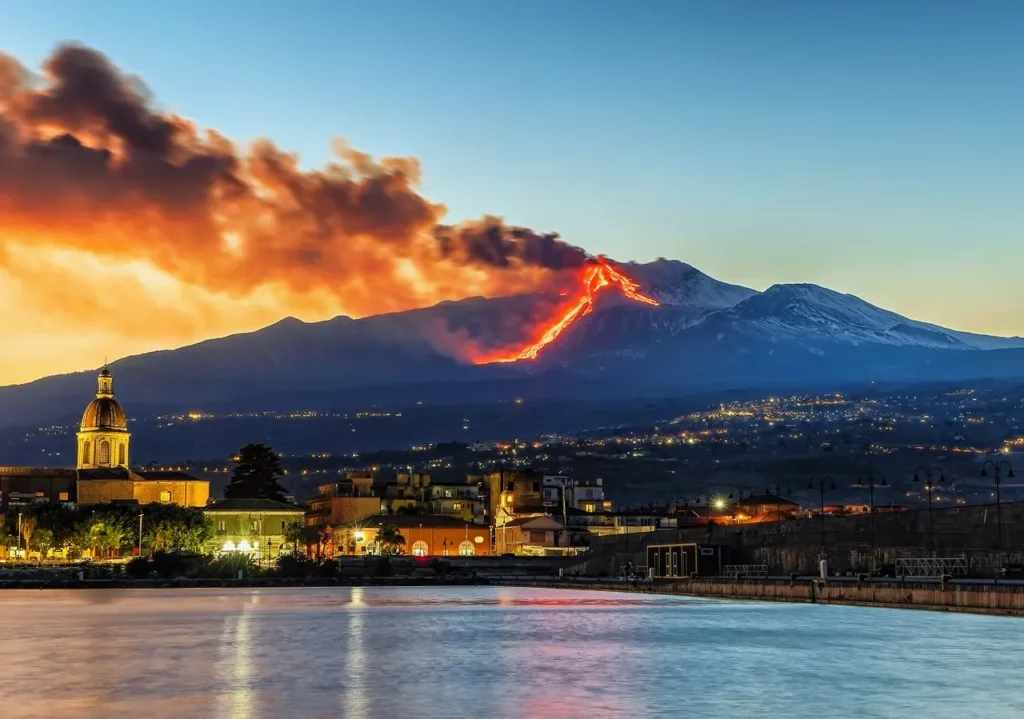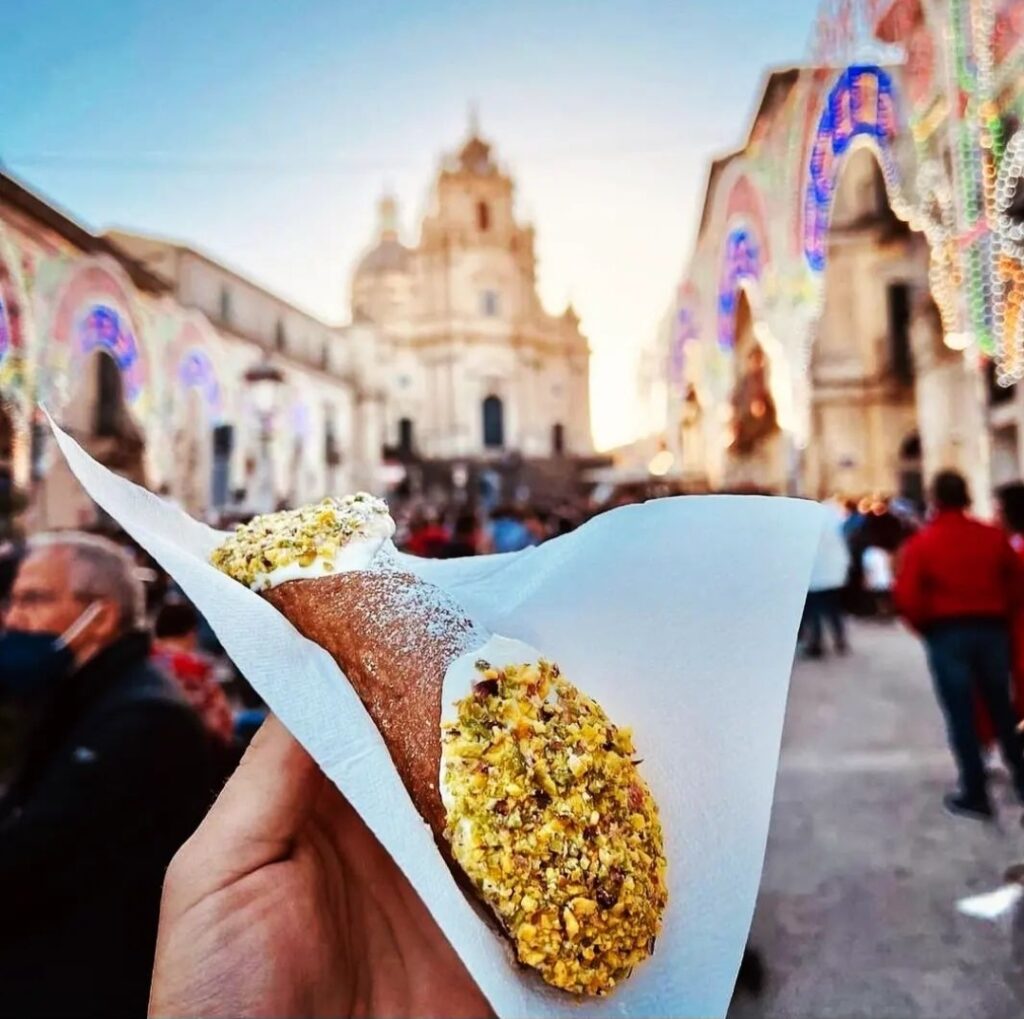Sicilian Puppets
Sicilian Puppets: Strings of History, Culture, and Art
Sicily, the captivating Italian island located in the Mediterranean Sea, boasts a rich cultural tapestry woven with history, art, and tradition. Among its many cultural treasures, Sicilian puppets stand out as unique and captivating symbols of the island’s heritage. These intricately crafted marionettes have captured the hearts and imaginations of locals and visitors alike for generations, serving as a fascinating window into the island’s past and its artistic prowess.
The Origins of Sicilian Puppets
The origin of Sicilian puppets, known as “Opera dei Pupi Siciliani,” is a tale that weaves together oral tradition, historical influences, and artistic craftsmanship. This unique art form has its roots in Sicily and has captivated audiences for generations. While pinpointing its exact birth date remains a challenge due to its oral transmission, the evolution of Sicilian puppets tells a story of cultural heritage, creative expression, and resilience.

Origins and Evolution
Tracing the exact origin of Sicilian puppets is complex, but it’s clear that they emerged from a rich tradition of storytelling and performance. In Sicily, tales of French paladins were originally recounted by “contastorie,” storytellers who used spoken word and a sword to engage audiences in town squares. Additionally, “cantastorie” used guitars and placards to narrate local news and stories, adding to the vibrant tradition of public performance. Over time, this dynamic form of storytelling evolved into the puppetry we see today.
The transition from spoken word to puppetry performance was gradual. Puppets, known as “pupi,” began to take center stage, allowing stories to come to life through their intricate movements and elaborate costumes. The puppet shows expanded upon the earlier forms of storytelling, offering audiences a visual and auditory experience that combined drama, action, and music.

Spanish Influence and Evolution
One theory suggests that the origins of Sicilian puppets can be traced back to Spanish influences. References to wooden puppets and sword fights appear in Chapter 25 of “Don Quixote,” hinting at an early form of puppetry in Spain. With the Spanish domination of Sicily, this tradition could have been carried over and adapted to the local culture.
Puppetry’s Golden Era
From the mid-19th century until the 1950s, the “Opera dei Pupi” reached its peak popularity as a primary form of entertainment for the middle and lower classes. Each neighborhood had its own puppet theater, where nightly performances took place. Given the emphasis on battles and combat scenes, the audience was predominantly male. Periodically, shows featuring everyday life scenes were performed, allowing women to attend.
However, with the advent of television, the popularity of puppetry waned, leading to its gradual decline and the need for preservation efforts.
Preserving an Ancient Tradition: The Pasqualino Museum
In 1965, Antonio Pasqualino, with the help of intellectuals, founded the Association for the Preservation of Popular Traditions. Together with his wife, he collected stage texts, puppets, miniature theaters, and props, saving them from destruction. This effort led to the establishment of the Antonio Pasqualino Puppetry Museum, which showcases the rich history and artistry of Sicilian puppetry. The museum’s annual puppetry festival, originally called the Festival of Morgana, has played a crucial role in keeping this art form alive and relevant.
Differences Between Palermitan and Catanesi Puppets

There are distinctions between the puppets crafted in Palermo and those in Catania. Palermitan puppets stand at around 90 cm tall and weigh up to 10 kg, including their armor. Their movable legs and a wire mechanism to unsheathe the sword add to their dynamic performance capabilities. The puppeteer (“puparo”) is a central figure behind the scenes, manipulating the puppets, voicing the characters, and improvising dialogues or scenes based on a loose structure. The Palermitan puppet shows were organized into eight scenes, spanning multiple days
Craftsmanship and Design

Sicilian puppets are masterfully crafted works of art, meticulously designed to capture the essence of the characters they portray. Typically standing around 2-4 feet tall, these marionettes are constructed from wood, with jointed limbs controlled by strings. Artisans pay incredible attention to detail, creating intricate armor, clothing, and facial features that reflect the distinct characters of medieval knights, noble ladies, and legendary heroes.
The puppets’ mobility and realism are achieved through a complex system of strings and controls operated by puppeteers, often referred to as “pupari.” Pupari are highly skilled performers who bring these puppets to life on stage, animating them with graceful and energetic movements that resonate with audiences of all ages.
Narratives and Performance
At the heart of Sicilian puppetry are the narratives that unfold on stage. These performances are often epic tales drawn from medieval romances, chivalric legends, and heroic stories, such as the tales of the Paladins of Charlemagne. The narratives are adapted to reflect the cultural and historical context of Sicily, creating a unique fusion of local identity and classic stories.
The puppet shows are presented in a specialized booth called the “casa dei pupi,” complete with painted backdrops and ornate decorations that transport audiences into a world of fantasy and adventure. The shows are a blend of drama, action, humor, and music, accompanied by a narrator who recites the story in a rhythmic, poetic manner known as “cuntu.”
Preserving a Cultural Heritage
Sicilian puppetry is not only a form of entertainment but also a cultural treasure that reflects the island’s history and values. It’s a visual and auditory feast that engages both young and old, providing a unique glimpse into a bygone era. Unfortunately, like many traditional art forms, Sicilian puppetry has faced challenges in maintaining its relevance in the modern world.
Efforts to preserve and revitalize this art form have been ongoing. Various organizations, museums, and individuals are dedicated to safeguarding the legacy of Sicilian puppetry. Festivals, workshops, and educational initiatives aim to pass down the skills and knowledge required to create and perform with these puppets to future generations.
Sicilian puppets are more than mere wooden figures with strings; they embody the spirit of a culture deeply rooted in history and artistic expression. These captivating marionettes, with their intricate craftsmanship and mesmerizing performances, provide a captivating bridge between the past and the present. As long as there are those who recognize their significance and value, Sicilian puppets will continue to tell their timeless stories and enchant audiences for generations to come.



